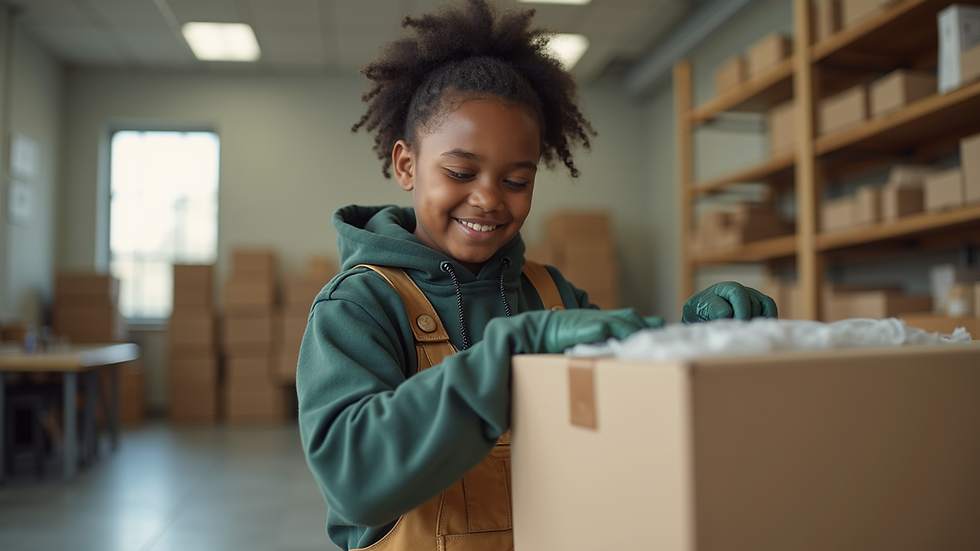Empowering Youth Through Disaster Recovery Training
- Scotty Hinkson
- 5 days ago
- 4 min read
Disasters strike without warning, leaving communities vulnerable and in urgent need of support. While emergency services play a critical role, the involvement of local youth in disaster recovery efforts can transform the response and rebuild process. Training young people in disaster recovery not only equips them with valuable skills but also strengthens community resilience. This post explores how disaster recovery training empowers youth, the benefits it brings, and practical ways to implement such programs.

Why Youth Matter in Disaster Recovery
Young people represent a significant portion of many communities. Their energy, creativity, and willingness to learn make them ideal contributors to recovery efforts. Engaging youth in disaster recovery:
Builds local capacity to respond quickly
Encourages leadership and responsibility
Fosters a sense of community and belonging
Provides practical skills that benefit their future
When youth are trained in disaster recovery, they become active agents of change rather than passive victims. This shift helps communities recover faster and more effectively.
Key Skills Taught in Disaster Recovery Training
Disaster recovery training covers a range of skills that prepare youth to assist in various phases of recovery. These include:
Basic first aid and emergency response: Teaching how to provide immediate care and support to injured individuals.
Damage assessment: Learning to evaluate the extent of damage to homes, infrastructure, and public spaces.
Logistics and supply management: Understanding how to organize, distribute, and track relief supplies efficiently.
Communication skills: Training in clear, calm communication during crises, including working with emergency teams and affected families.
Psychosocial support: Recognizing trauma signs and providing emotional support to survivors.
Safety protocols: Ensuring personal and community safety during recovery operations.
These skills help youth contribute meaningfully while staying safe.
Examples of Successful Youth Disaster Recovery Programs
Several organizations worldwide have demonstrated the impact of youth involvement in disaster recovery:
Red Cross Youth Programs: Many Red Cross branches offer youth training in disaster preparedness and recovery. For example, in the Philippines, youth volunteers played a vital role in Typhoon Haiyan recovery by assisting in shelter construction and community education.
Youth Emergency Action Teams (YEAT): In the United States, YEAT trains high school students in emergency response and recovery, enabling them to support local agencies during disasters.
Save the Children’s Youth Resilience Projects: These initiatives focus on building young people’s capacity to respond to disasters in vulnerable regions, combining training with community outreach.
These programs show that with proper training, youth can be reliable partners in recovery.
How to Start a Disaster Recovery Training Program for Youth
Communities interested in starting such programs can follow these steps:
Assess community needs: Identify the types of disasters most likely to occur and the skills needed for recovery.
Partner with local agencies: Collaborate with emergency services, NGOs, and schools to design relevant training.
Develop a curriculum: Include practical exercises, simulations, and real-life scenarios.
Recruit youth participants: Engage schools, youth clubs, and community centers to attract motivated young people.
Provide ongoing support: Offer refresher courses, mentorship, and opportunities to participate in actual recovery efforts.
Evaluate and adapt: Collect feedback to improve the program continuously.
Starting small with pilot groups can help refine the approach before scaling up.
Benefits Beyond Disaster Recovery
Training youth in disaster recovery offers advantages that extend beyond emergencies:
Career development: Skills learned can lead to jobs in emergency management, healthcare, or community services.
Personal growth: Youth gain confidence, teamwork abilities, and problem-solving skills.
Community cohesion: Working together during crises strengthens bonds among young people and between generations.
Preparedness culture: Trained youth often become advocates for disaster preparedness in their families and neighborhoods.
These benefits create a more resilient and connected community overall.
Challenges and How to Overcome Them
Implementing youth disaster recovery training faces some challenges:
Resource limitations: Funding and materials may be scarce. Seeking grants and community donations can help.
Sustaining interest: Keeping youth engaged requires interactive and meaningful activities.
Safety concerns: Proper supervision and clear safety guidelines are essential.
Cultural barriers: Tailoring programs to respect local customs encourages participation.
Addressing these challenges ensures the program’s success and longevity.
The Role of Technology in Training
Technology can enhance disaster recovery training for youth by:
Offering online courses and simulations for remote learning
Using mobile apps for real-time communication during drills
Sharing videos and tutorials to reinforce lessons
Connecting youth with experts and peers globally
Incorporating technology makes training more accessible and engaging.
How Communities Can Support Youth Involvement
Communities can encourage youth participation by:
Recognizing and celebrating their contributions publicly
Providing safe spaces and resources for training activities
Involving families and schools in awareness campaigns
Creating volunteer opportunities during actual disaster recovery
Support from the entire community motivates youth and maximizes their impact.
Disaster recovery training gives young people the tools to help their communities heal and rebuild after crises. By investing in youth, communities not only improve their immediate response but also build a foundation for long-term resilience. Starting or supporting such programs is a practical step toward safer, stronger neighborhoods where everyone plays a part in recovery. If you want to make a difference, consider how you can help train and involve youth in disaster recovery today.


Comments